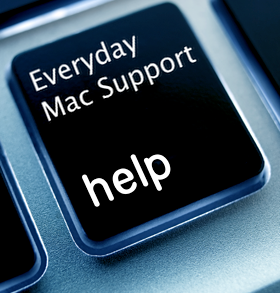This Mac tip is provided by Mark Greentree and was originally posted on Mark’s blog – Everyday Mac Support. For more of Mark’s tips visit his site, follow him on Twitter, or browse his archive of posts here.
How To: Show All Hidden Files In The Finder
Did you know that you are not seeing all the files on your Mac?
Apple has for years taken the liberty of hiding files which it deems to be not important for daily access but are certainly important for the operating of your system.
If you would like to tinker with your Mac then you can show all the hidden files by undertaking a Terminal command.
Simply navigate to Applications>Utilities>Terminal. Launch terminal and you will be presented with a terminal window which looks similar to this:

Simply type in or copy and paste the following:
defaults write com.apple.Finder AppleShowAllFiles TRUE
Click return and then type in:
killall Finder
Then click return on your keyboard. Please note if you do not do this final step hidden files will not be displayed. Once this is done your finder window will look something like this:

Most of the hidden files and folders here are Unix based. All the hidden files are greyed out but are still accessible by simply clicking on them.
Please note it is imperative that you only play around with this option should you understand what you are doing. Removing or renaming certain files and folders in this view can cause you system to become unstable.
To hide these folders again go back to the terminal and type in the following:
defaults write com.apple.Finder AppleShowAllFiles FALSE
Click the return key and then type in:
killall Finder
Upon successful entry of the final step your hidden files and folders will once again be hidden.
Warning: Terminal commands have the ability to change the running operation of your Mac. Please copy and paste the Terminal command as shown directly from the article. Mistakes in keystokes can cause your Mac to perform differently and may in-fact result in a loss of data. It is advised that you only use the Terminal if you feel comfortable with the command line interface. If you are ever unsure please consult your local tech support person.


